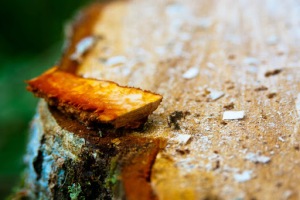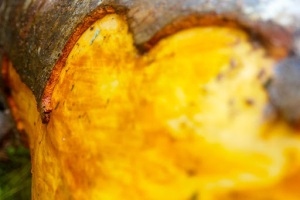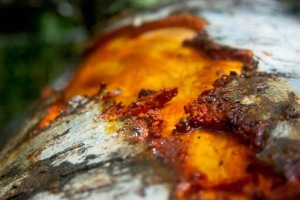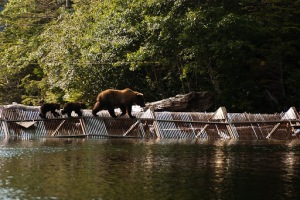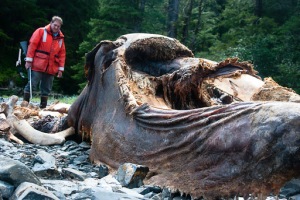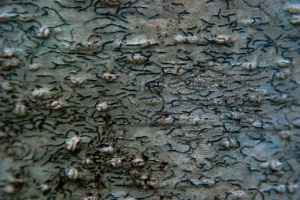Category Archives: rompus
Scientific Translation
I’m working on a briefing sheet about a stream restoration project. Why am I getting paid to do this when the Forest Service already has briefing sheets on these projects?
Well, the briefing sheet on this particular watershed describes it thus:
Watershed condition indicators reflect concern for long term health and function of Aquatic Habitat and Riparian Vegetation. A high percentage of riparian area associated with alluvial wood-dependent channels has been harvested or roaded. Two condition indicators addressing In-stream Large Wood and Channel Shape/Function rate in the Class 3 range. Riparian Vegetation indicator also rates Class 3, due to historic riparian harvest level of 30%. The watershed hydrologic and fish habitat integrity is at risk due to high percentage (77%) of roads proximal to streams, which resulted in a Class 3 rating for this indicator.
Have you got all that?
After reading this and a few other source documents, I got down to business and wrote a few different chunks of text, including a timeline for work in the watershed, and sent it around to get feedback.
Let’s look at an example from the timeline.
I wrote:
Landslides change the course of Fubar Creek and cut off spawning grounds
After comments from a nonprofit partner, I changed it to:
Landslides from clearcut slopes change the course of Fubar Creek and cut off spawning grounds
And I’ve just received the suggestion from a Forest Service scientist to change it to
Numerous landslides aggraded Fubar Creek and the high volume of gravel sediments caused the stream to find an alternate route beneath the Hydaburg highway, essentially cutting off traditional fish spawning habitat.
Many scientists are able to communicate clearly with the general public, but there are enough who haven’t got the time or inclination to develop the skills to explain their work to people outside their own field. And then you need to hire people like me to translate from Science to General Public.
Also, bonus points if you can use “aggrade” in a sentence, besides the one above.
Hiking in Sitka: Gavan Hill
The town of Sitka is spread along the flat coastal edge of Baranof Island, so directly behind town are the mountains, and a couple trails that go straight up. Gavan Hill is one of them, and I’ve now been up it three Sundays in a row.
You walk through a muskeg meadow, but once you get into the woods the stairs start. At first they are pretty mild.

But it doesn’t take long before they get more serious.
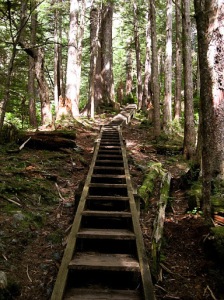 Part way up there is a little lookout platform. It’s at maybe 1400 feet. The first time up the trail my taller half was visiting and we went all the way up to the alpine area above the treeline, another 1000 feet up. The next day, I was had sore calves and a sore back. That made it personal – I went back the next week to prove that I could. My lovely intern came with me, and we got up to the lookout in 59:34. This Sunday, I went up again in 50:02. I guess I’m faster with no one to talk to!
Part way up there is a little lookout platform. It’s at maybe 1400 feet. The first time up the trail my taller half was visiting and we went all the way up to the alpine area above the treeline, another 1000 feet up. The next day, I was had sore calves and a sore back. That made it personal – I went back the next week to prove that I could. My lovely intern came with me, and we got up to the lookout in 59:34. This Sunday, I went up again in 50:02. I guess I’m faster with no one to talk to!
Because it’s a small town and I’ve been here for more than a month, I saw four people I knew on the trail, including my supervisor from the Forest Service. Next weekend we’ll be out in the field, and the weekend after that I’m back in Seattle for a quick visit, so I’ll won’t get up Gavan again for a bit, but I hope I can keep improving my time, along with my calf muscles!
Deer on Prince of Wales Island
When we were driving out long gravel roads to field sites on Prince of Wales Island last month, there were Sitka black-tailed deer everywhere. Each time we surprised one with the truck, they would freeze and stare, swiveling their oversized ears at us, but they were reluctant to leave the clear space of the road for the thick underbrush. We would slow to a crawl, and they bounded before us for long minutes before disappearing into the bushes.
We saw several does with tiny fawns, including this guy. It was running after its mother and a sibling when suddenly it just flat fell over! I thought perhaps the mother had somehow carelessly kicked it in the head, so sudden was its drop, but my boss (and veteran deer hunter) said it’s a defense mechanism: playing dead.
If it was in deep grass or in the brush, I could see that working. On a gravel road, though, not so much!
From the soil scientist and hydrologists we were staying with at the Craig Ranger District, we learned a game called “Build a Herd,” which is what they play from driving from field site to field site on POW.
Every deer spotted on your side of the road is added to your herd, but if you see an eagle it carries off one of your deer. A bear kills them all, and if you’re on the radio when you see a deer, it gets cancer and dies. The largest herd at the end of the trip wins.
It turns out that I’m no good at building a herd. My boss, the accomplished hunter, spotted every deer as soon as they entered his field of vision. He pointed them out on both sides of the road, and half the time noticed new antlers sprouting on the bucks while I was still looking for the animal he was talking about.
Here’s the winning strategy, though: don’t sit on the side of the truck that will be the water side on the way back to town. In the evening he was on the beach side of the road where all the eagles are staring into the water for fish. Half his herd was carried off, and my side of the truck won, 21 to 13.
Sun in Southeast Alaska!
Stop the presses!
Sun in Sitka!
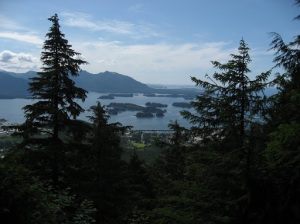 After a couple weeks of rain, drizzle, aggressive misting, rain and more rain, it started to clear up yesterday afternoon and today has been super beautiful and sunny. It could have done this last week, for the holiday weekend, but I’m glad it’s here now. I went partway up Gavan Hill to a little lookout. Gavan Hill is all stairs, it took us 59:34 to the lookout and now I have a time to beat next time I go up.
After a couple weeks of rain, drizzle, aggressive misting, rain and more rain, it started to clear up yesterday afternoon and today has been super beautiful and sunny. It could have done this last week, for the holiday weekend, but I’m glad it’s here now. I went partway up Gavan Hill to a little lookout. Gavan Hill is all stairs, it took us 59:34 to the lookout and now I have a time to beat next time I go up.
We met some good dogs on the trail, and also a squirrel.
Restoration work: red alders
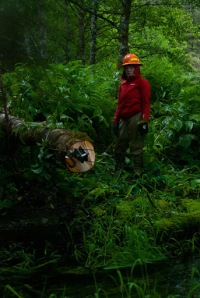
This week I spent some more time in the field, this time helping watching some folks put trees, a.k.a. large woody debris, into a stream. This makes for good habitat for baby salmon. Although it involved a lot of tromping around in the rain and a lot of no-see-ums who wanted to chew on me, it was fun because I had the right gear to be waterproof and I got to see what is involved in the restoration process.
All the trees added to the stream were red alders, a quick growing tree that takes advantage of disturbed ground in places where there were logging roads, or river bottoms that large logs were dragged through.
Red alders are tall and have white bark, and if I went by the minimal tree knowledge I had coming into this job with the Forest Service (where I have learned much about salmon, and a little about trees) I would have tried to tell you that they were birch trees.
However, once they cut a few red alders down and dragged them around, scraping off the bark, it became obvious that the inner layer of the bark is the color of a nosebleed, hence the “red” of red alder. And I don’t think you see that in a birch…
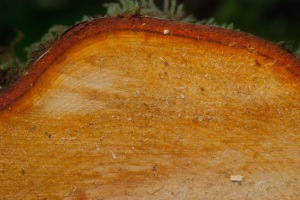
I thought it was pretty, so I took a bunch of pictures of it. In fact, I was photographing some scraped bark when they started calling my name, and suggested I leave when everyone else was walking off, so as not to leave me alone in bear country.
For the record, there was a bear spotted, but it ran off the trail before anyone but one guy saw it. I saw the tracks, but they weren’t super big.